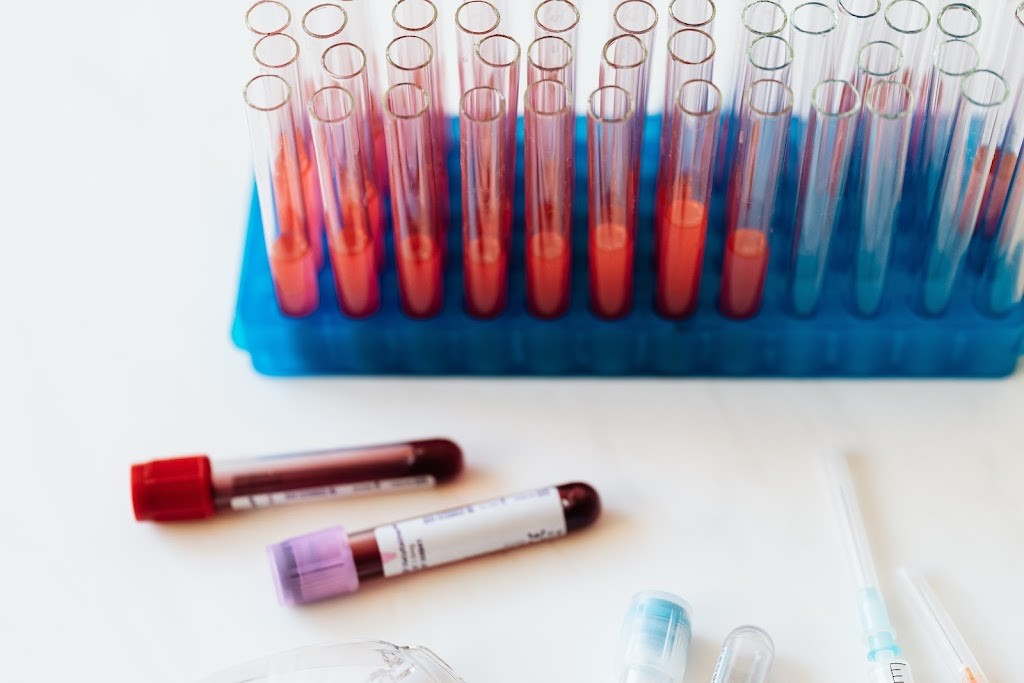Anemia is a prevalent condition that affects millions of people worldwide. It occurs when the body lacks enough healthy red blood cells to carry sufficient oxygen to the tissues. If you or someone you know has been diagnosed with anemia or suspects its presence, this blog will provide you with full information about this condition, including its types, causes, symptoms, and available treatments.
Types of Anemia
There are several types of anemia, each with its own specific causes and characteristics. The most common types of anemia include:
Iron-deficiency anemia:
This is the most prevalent type of anemia worldwide. It occurs when the body lacks sufficient iron to produce an adequate amount of hemoglobin, the protein responsible for carrying oxygen in the red blood cells.
Vitamin-deficiency anemia:
Deficiencies in vitamins such as vitamin B12 and folate can lead to anemia. These vitamins are necessary for the production of healthy red blood cells. Inadequate intake or absorption of these vitamins can result in decreased red blood cell production.
Anemia of chronic disease:
This type of anemia is often associated with chronic conditions such as inflammatory diseases, autoimmune disorders, or chronic infections. The underlying inflammation or disease process can interfere with the production and lifespan of red blood cells.
Aplastic anemia:
Aplastic anemia is a rare but serious condition in which the bone marrow fails to produce an adequate number of red blood cells, white blood cells, and platelets. This can be caused by inherited genetic disorders, exposure to certain drugs or toxins, or autoimmune conditions.
Hemolytic anemia:
Hemolytic anemia occurs when red blood cells are destroyed faster than the body can replace them. It can be caused by inherited conditions, autoimmune disorders, infections, certain medications, or reactions to blood transfusions.
Sickle cell anemia:
Sickle cell anemia is an inherited form of anemia that affects the shape and function of red blood cells. The abnormal shape of the red blood cells can cause them to become stuck in blood vessels, leading to pain, organ damage, and a decreased lifespan of the red blood cells.
Thalassemia:
Thalassemia is a genetic blood disorder that affects the production of hemoglobin. It results in the production of fewer healthy red blood cells and can range from mild to severe forms.
These are just a few examples of the types of anemia that exist. It’s important to note that each type has different causes, symptoms, and treatment approaches. If you suspect you have anemia, it is recommended to consult a healthcare professional for a proper diagnosis and appropriate management.
Causes and Symptoms of Anemia
Causes and symptoms of anemia can vary depending on the specific type of anemia. However, there are some common causes and symptoms that apply to many types of anemia.
Causes of Anemia:
- Iron deficiency: Inadequate intake of iron-rich foods, poor iron absorption, blood loss (through menstruation, gastrointestinal bleeding, or injury), and certain medical conditions can lead to iron-deficiency anemia.
- Vitamin deficiencies: Lack of essential vitamins like vitamin B12 or folate can cause anemia.
- Chronic diseases: Conditions such as chronic kidney disease, cancer, rheumatoid arthritis, HIV/AIDS, and inflammatory bowel disease can disrupt the production of red blood cells and lead to anemia.
- Genetic or inherited disorders: Certain genetic disorders, such as sickle cell anemia and thalassemia, can affect the structure or production of red blood cells.
- Bone marrow disorders: Damage to the bone marrow from radiation, chemotherapy, or other factors can result in decreased red blood cell production.
- Autoimmune disorders: Conditions like lupus or rheumatoid arthritis can cause the immune system to attack and destroy red blood cells.
Symptoms of Anemia:
- Fatigue and weakness: Feeling excessively tired, weak, or lacking energy is a common symptom of anemia. It occurs because the body is not receiving enough oxygen due to a decrease in red blood cells.
- Pale skin: Anemia can cause paleness in the skin, particularly noticeable in the face, nails, and mucous membranes.
- Shortness of breath: Reduced oxygen-carrying capacity can lead to difficulty breathing, especially during physical exertion or when lying down.
- Rapid heartbeat: Anemia can cause the heart to work harder to compensate for the decreased oxygen supply, resulting in an increased heart rate or palpitations.
- Dizziness or lightheadedness: Insufficient oxygen to the brain can cause feelings of dizziness, lightheadedness, or even fainting.
- Cold hands and feet: Anemia can affect circulation, leading to cold extremities.
- Headaches and difficulty concentrating: Inadequate oxygen supply to the brain can result in headaches, difficulty concentrating, and poor cognitive function.
- Chest pain: Severe anemia may cause chest pain or angina-like symptoms, particularly during physical activity.
It’s important to note that these symptoms can vary in severity depending on the type and underlying cause of anemia. If you experience these symptoms or suspect you may have anemia, it is advisable to consult a healthcare professional for proper diagnosis and treatment.
Diagnosis and Treatment of Anemia
Diagnosis and treatment of anemia depend on the specific type and underlying cause of the condition. Here is an overview of the common approaches used in the diagnosis and treatment of anemia:
Diagnosis of Anemia:
- Medical history and physical examination: A healthcare professional will discuss your symptoms, medical history, family history, and perform a physical examination to assess for signs of anemia.
- Blood tests: A complete blood count (CBC) is a common blood test used to diagnose anemia. It measures various components of the blood, including red blood cell count, hemoglobin levels, hematocrit, and other indices that can indicate the presence and severity of anemia.
- Additional tests: In some cases, additional tests may be ordered to determine the underlying cause of anemia. These may include iron studies, vitamin B12 and folate levels, bone marrow biopsy, genetic testing, or specialized tests based on the suspected cause.
Treatment of Anemia:
- Iron supplementation: In cases of iron-deficiency anemia, iron supplements may be prescribed to replenish iron levels and stimulate red blood cell production. Dietary changes to include iron-rich foods may also be recommended.
- Vitamin supplements: Vitamin-deficiency anemia may be treated with supplements of the deficient vitamin (e.g., vitamin B12 or folate).
- Blood transfusion: Severe anemia or acute blood loss may require a blood transfusion to quickly replace red blood cells and restore oxygen-carrying capacity.
- Medications: Depending on the underlying cause of anemia, certain medications may be prescribed. For example, erythropoiesis-stimulating agents (ESAs) can stimulate red blood cell production in some cases.
- Treat underlying conditions: Anemia caused by chronic diseases or other underlying conditions may require addressing and managing those conditions to improve anemia.
- Dietary changes: Modifying your diet to include iron-rich foods, vitamin-rich foods, and a balanced diet overall can help prevent or manage certain types of anemia.
- Lifestyle adjustments: Certain lifestyle changes, such as managing stress, getting regular exercise, and ensuring adequate sleep, can contribute to overall well-being and potentially improve anemia symptoms.
The specific treatment plan will be determined by the healthcare professional based on the underlying cause, severity of anemia, individual factors, and overall health status. It is important to consult a healthcare professional for an accurate diagnosis and appropriate treatment recommendations for your specific situation.
Prevention and Management of Anemia
Prevention and management strategies for anemia focus on addressing the underlying causes and promoting overall health. Here are some preventive and management measures for anemia:
Prevention of Anemia:
- Balanced diet: Consuming a well-rounded diet that includes iron-rich foods (such as lean meats, beans, dark leafy greens, and fortified cereals), as well as foods rich in vitamins (like fruits, vegetables, and whole grains), can help prevent nutritional deficiencies that lead to anemia.
- Adequate iron intake: Ensuring sufficient intake of dietary iron is essential. Iron absorption can be enhanced by consuming vitamin C-rich foods (such as citrus fruits) with iron-rich foods.
- Proper food handling and preparation: To prevent foodborne infections, which can contribute to anemia, it’s important to handle and prepare food safely, including proper cooking, storage, and hygiene practices.
- Supplementation: In cases where dietary intake is insufficient or when specific deficiencies are identified (such as iron or vitamin B12), supplements may be recommended under the guidance of a healthcare professional.
Management of Anemia:
- Medical treatment: Following a proper diagnosis, treatment plans will be tailored based on the underlying cause of anemia. This may involve iron supplementation, vitamin supplements, medications, or other interventions as prescribed by a healthcare professional.
- Regular monitoring: Regular blood tests, including complete blood count (CBC), may be recommended to monitor the progress of anemia treatment and ensure the effectiveness of interventions.
- Treating underlying conditions: Managing and treating any underlying medical conditions contributing to anemia is crucial. This may involve medication adjustments, disease management, or specialized treatments as advised by healthcare professionals.
- Lifestyle adjustments: Adopting a healthy lifestyle can support overall well-being and help manage anemia. This includes regular exercise, stress management, adequate sleep, and avoiding harmful habits like smoking and excessive alcohol consumption.
- Blood transfusion: In severe cases of anemia or acute blood loss, a blood transfusion may be required to rapidly replenish red blood cells and restore oxygen-carrying capacity.
- Regular follow-up: It’s important to maintain regular follow-up appointments with healthcare professionals to monitor progress, discuss any changes or concerns, and make adjustments to the treatment plan as needed.
It’s crucial to consult with a healthcare professional for personalized guidance on preventing and managing anemia. They can provide individualized recommendations based on your specific circumstances, medical history, and underlying causes of anemia.
Complications and Risks of Anemia
Anemia, if left untreated or poorly managed, can lead to various complications and pose certain risks to an individual’s health. Some of the potential complications and risks associated with anemia include:
Fatigue and decreased quality of life:
Anemia can cause persistent fatigue, weakness, and a decreased overall quality of life. These symptoms can significantly impact daily activities, work performance, and general well-being.
Impaired cognitive function:
Inadequate oxygen supply to the brain due to anemia can lead to difficulties in concentration, memory problems, and impaired cognitive function.
Cardiac complications:
Severe or untreated anemia can strain the heart as it works harder to compensate for the reduced oxygen-carrying capacity of the blood. Over time, this strain can lead to heart problems such as arrhythmias, enlarged heart, or heart failure.
Pregnancy complications:
Anemia during pregnancy can increase the risk of complications such as premature birth, low birth weight, and developmental issues for the baby. It can also lead to maternal complications like increased fatigue, higher risk of infections, and postpartum depression.
Delayed growth and development in children:
Anemia in children, particularly during critical growth periods, can hinder normal growth and development, affecting both physical and cognitive development.
Increased susceptibility to infections:
Anemia weakens the immune system, making individuals more vulnerable to infections and delaying the recovery process.
Worsening of underlying health conditions:
Anemia can exacerbate the symptoms and complications of underlying chronic conditions, such as heart disease, kidney disease, or inflammatory disorders.
Increased risk of falls and accidents:
Anemia-related fatigue, weakness, dizziness, and impaired cognitive function can increase the risk of falls, accidents, and injuries.
It’s important to note that the risks and complications associated with anemia can vary depending on the severity of the condition, the underlying cause, and individual factors. Seeking timely medical attention, following treatment plans, and managing anemia effectively can help mitigate these risks and prevent complications. If you suspect you have anemia or are experiencing symptoms, it is advisable to consult a healthcare professional for proper diagnosis and appropriate management.
In conclusion
understanding anemia, its types, causes, symptoms, and available treatments is vital for anyone affected by or concerned about this condition. By recognizing the early signs, seeking proper medical care, and adopting preventive measures, you can effectively manage anemia and improve your overall well-being. Stay informed, prioritize your health, and consult a healthcare professional for personalized guidance. Remember, knowledge is power when it comes to maintaining a healthy life free from the burdens of anemia.





